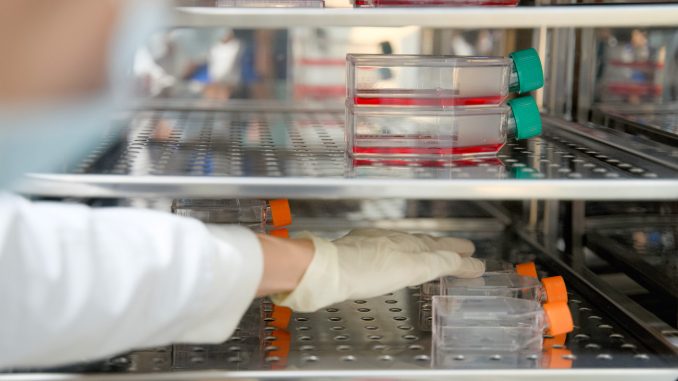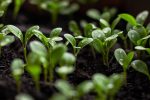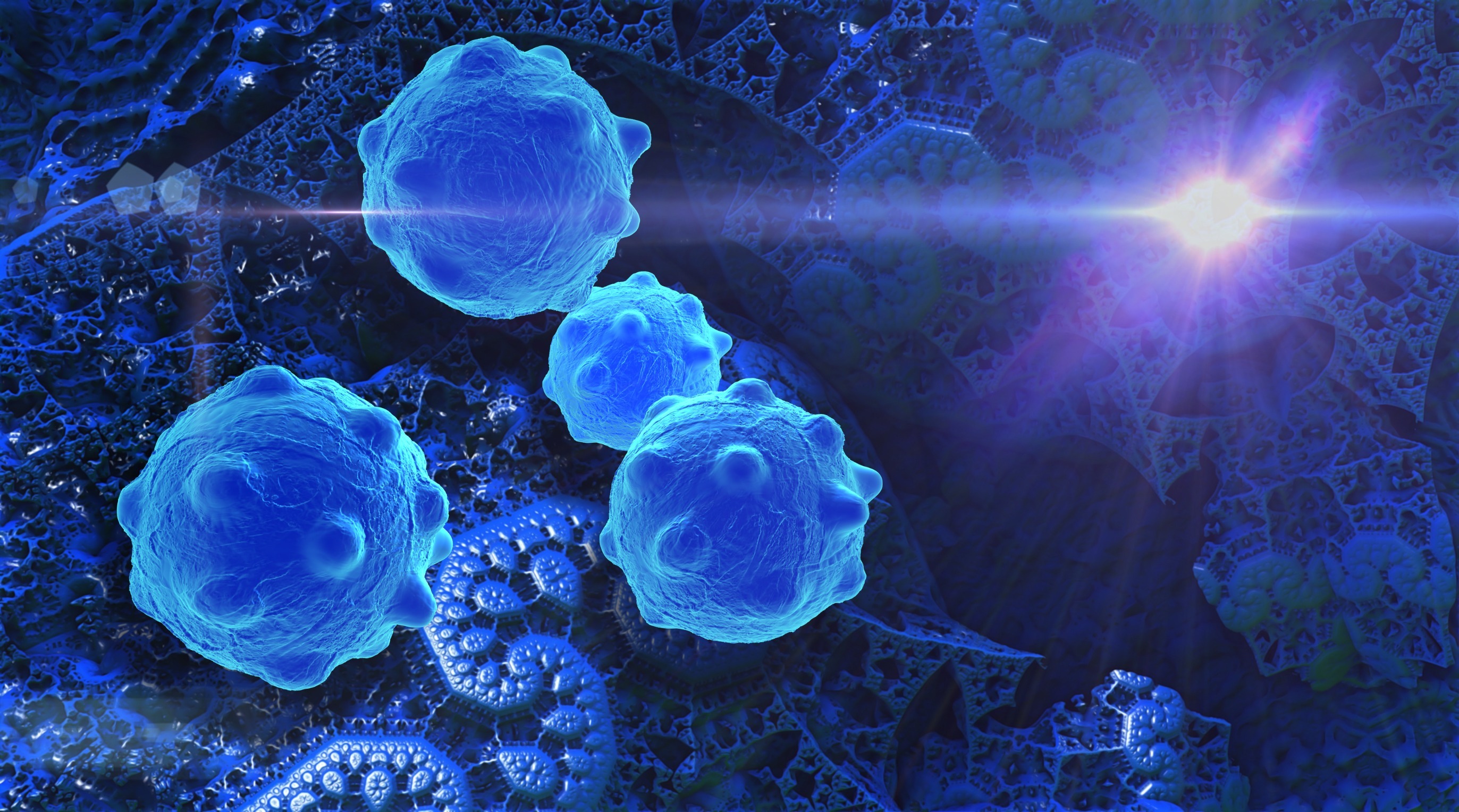
Animal cell culture is a fundamental approach in biotechnology and bioprocess engineering. It is the culturing of animal cells in artificial media.
The technology is widely used in recombinant DNA research for genetic engineering and the wide range of industrial processes that offer significant economic potential. These commercial enterprises include cancer research, monoclonal antibody development, vaccine production and pharmaceutical drugs manufacture.
Overview
In general terms, tissue culturing requires the growth of cells from organs and tissues that have come from animals. These are grown in a suitable but artificial environment that promotes cell growth. The cells removed from the tissue are separated into single cells before placed and grown up in a suitable culturing medium. The approach is distinct from other forms of culturing such as tissue culturing where mammalian or plant tissue is produced and organ cultivation.
Establishing a Primary Cell Culture
- The cells to be cultivated need to be isolated from whatever tissue is of interest.
- The cells are disaggregated. It means that the cells are separated from each other which disrupts the lines of communication between them. The relationship such cells had with each other is dispensed with. The process of disaggregation is achieved either chemically or mechanically.
- Enzymes are commonly used such as collagenase, trypsin, hyaluronidase and combinations. These catalyse hydrolysis of proteins binding cells together. Mechanical methods use tissue homogenisers and weak ultrasound which physically disrupt the links between cells.
- The cells are then incubated in a suitable culture media. The isolated cells are cultivated in such a way as to be optimised for their growth or for production of metabolites. This is known as the primary culture.
Sub-culturing
When the cells of the primary culture have been grown appropriately and achieved a suitable growth state, they are sub-cultured which gives them more nutritional value and support. This sub-culturing step keeps the cells in a continuous growth phase.
If this was not conducted the primary cell culture would continue to consume all the nutrients in the fermentation medium. When these were depleted, the lack of nutrients would lead to animal cell stagnation and then death of the culture.
The key process is about maintaining cell viability and that is best achieved by regular transference of cells to fresh culture media. In the sub culturing process, cells from the primary cell culture are routinely harvested, isolated and then transferred into fresh culture media. It is an ongoing process and one of the roles of technicians in animal cell culturing is to maintain a viable cell culture.
In some cases the sub culturing routine is halted by preserving animal cells in glycerol or DMSO (dimethyl sulphoxide) for cryopreservation.
Primary Cell Cultures – Establishing the Animal Cell Line
The first step in establishing a primary cell culture is to obtain a cell line. The cells from an animal organ are surgically removed and then placed in a suitable culture medium. They will remain attached to each other and continue to grow and divide.
The tissue is then divided further into smaller fragments by cutting before using either a physical or chemical disaggregation technique. A number of cells lose viability as a result of the trauma but a number will also survive, begin to grow and divide to form new isolated cells. If the cells have retained their viability, they will multiply repeatedly and continue to grow with the correct nurturing. These cells are often grown in flat plastic bottles where the culture medium is regularly replenished. Such cell cultures become primary cell lines and are the source for larger-scale fermentations.
Established Cell Cultures
The maintenance of primary cell lines in fresh media is designed to continue their viability and growth. Sub-culturing a number of times – it could be up to 70 times means the cell line becomes an established cell line. Primary cell lines are usually very slow growing but an established cell line grows much faster because changes occur in their physiology due to alterations in their ell metabolism. It’s due to selective pressures obtained from the repeated number of sub-culturing steps.
Transformed Cells
With repeated sub-culturing its possible for established cell lines to become immortal. The cells than have the ability or capacity to grow indefinitely. There are significant changes in cell division. The immortality usually happens after at least 80 sub-culturing steps. Normal cells usually have a limited growth capability but a transformation (change) in the genetic function leads to this new permanence of existence. It is reckoned that transformed cells become insensitive to external stimuli. In some cases their are distinct changes in chromosomal structure and numbers too.
Types of Culture Media
A number of different types of media are used in cell culturing. They fall into two broad categories.
[1] Natural media – these contain media components of natural derived origin. They provide sufficient nutritional support for the proliferation of animal cells. They could be derived form biological fluids and tissue extracts.
- Biological fluids – various biological fluids are used as culture media – they include pleural fluid, amniotic fluid, aqueous humour. Serum is obtained from adult human blood, placental cord blood, sheep, pig, calf and horse.
- Tissue extracts – the most common is check embryo extract but bovine embryo extract is used. Other sources include liver, bone, leucocytes, human sperm and spleen.
- Plasma Clots – 15 drops of plasma is mixed with 5 drops of embryo extract in a dish.
[2] Artificial media – these are chemically synthesized and are described invariably as serum free media, serum containing media, chemically defined media, protein free media. The first two types, serum-free media and serum containing media are highly distinct in composition.
These synthetic media are prepared using several nutrients derived from organic and inorganic sources, salts, minerals, vitamins, oxygen and carbon dioxide, serum proteins, cofactors, lipids, proteins and carbohydrates. The composition depends on the source of the cells and how the cell lines are to be used.
The serum-free media is literally a medium without serum. These are crude protein fractions including bovine serum albumin and alpha- beta-globulins. They can include serum extract tissue, tissue hydrolysates, growth factors and hormones. A number of carrier proteins are used such as albumin and transferrin as well as metal ions, polyamines, vitamins etc.
The serum-containing media is one that contains a complete set of essential growth factors, hormones, spreading and attachment factors, binding and transporting proteins. The serum contains amino acids both as individual factors or derived from proteins, lipids and other nutritional factors. In most cases such serum is also constructed to suppress the effect of shear stress so protecting the cell from physical trauma.
The Techniques For Cell Culturing
Anchorage Dependent Cell Culture
Virtually all normal tissue derived cells are anchorage dependent cells and they need a surface or scaffold, or indeed any type of support for their continued growth and proliferation.
This type of culture is known as an anchored dependent cell culture. Kidney cells are good examples of cells that need such a support. When a support surface is absent, animal anchorage dependent cells stop growing and they enter a state of programmed cell death. Such cells are sensitive to shear stress. These cells rely on cell to cell communication which makes use of cell signalling pathways. This high degree of interaction is needed for cell survival.
Anchorage Independent Animal Cell Culture
Cells that have no need for supports to grow are anchorage independent cell lines. These do not attach to any surface. A good example are lymphocytes. Cells too derived from haematopoietic systems and transformed cells such as myelomas are of this nature. They will proliferate in free suspension. This is a preferred form for culturing because are free of restrictions and tend to show better growth. Monoclonal antibody production tends to rely on this type of fermentation.


Really interesting article. I used it for my exam question.